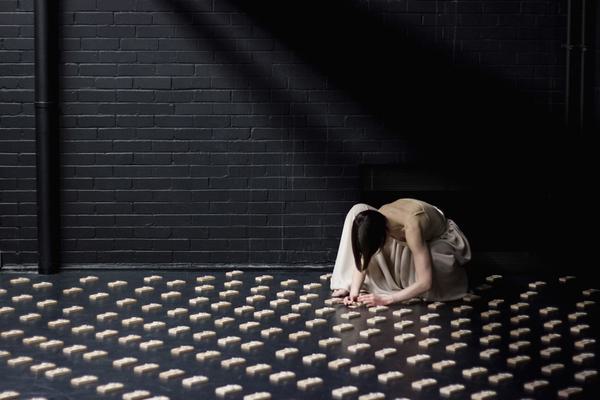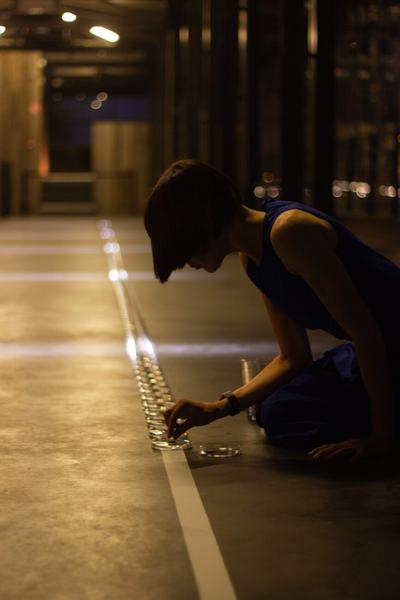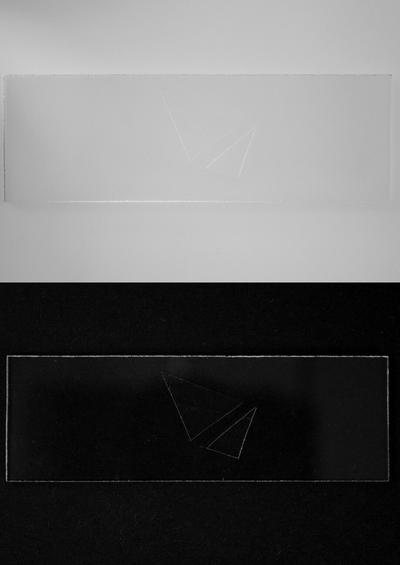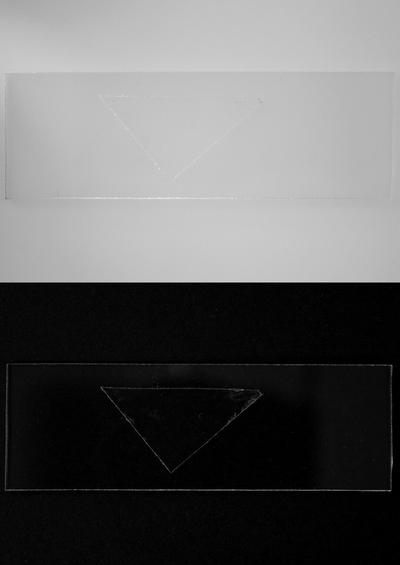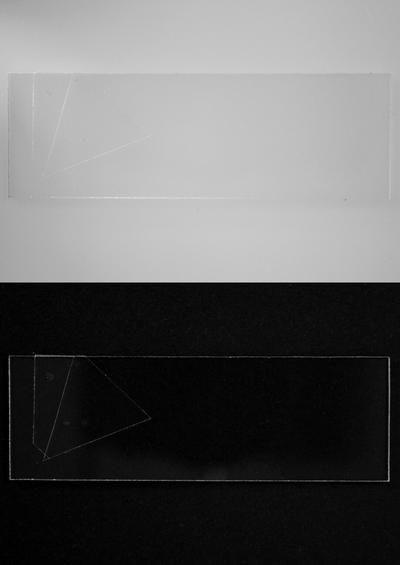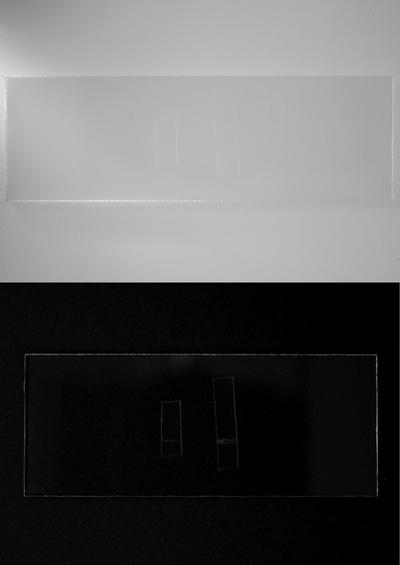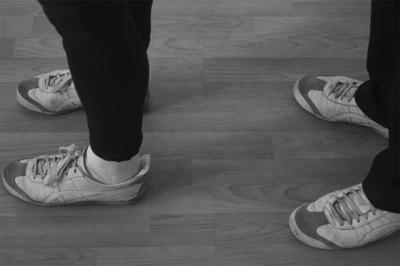STRIKE (2018)
In a totally dark room, Gillian will attempt to construct 40 electrical lights in 4 hours using only match light as she connects bulbs, wires and plugs.
When each light is finished it is plugged into a socket that is operated by an electrical timer switch. After four hours the switch will activate and the space will be illuminated. The illumination correlates to the performers success and ability to perform the task.
Darkness denotes a failure of the task.
[Performed at Tempting Failure, Croydon, 2018]
Perspective is not a Science (But a Hope) (2017)
Collaborating with 2nd year BA Hons Students at the University of Salford. Durational and Task-based performance.
[Presented at The Lowry (Salford), 2017]
BLASTED (2017)
Choreography for film with local women in Lancashire, supported by the Heritage Lottery Fund and Light Up Lancaster. Lancaster King’s Own Museum.
[Presented at Light Up Lancaster, 2017]
Full Stop. (2017)
Two parallel lines of white tape create a running track that ends abruptly at a wall. Next to the wall is a speed radar. Gillian repeatedly runs towards the wall, trying to record ever-higher numbers on the display.
We are exploring personal risk in relation to performance. The faster she runs, the harder the impact, the higher the risk and the greater the cost.
With each run we learn more about how Gillian mitigates the risk of pain through technique and through tempering her performance.
Or, perhaps, injury and pain are the cost of success.
Made with the support of Tramway, Buzzcut and Arts Council England.
[Shown at Buzzcut 2017, Glasgow]
Tangent (2016)
Tangent is a task-based performance that assesses the perfection of a circle drawn by hand, using geometric processes to create a graphical representation of error. Gillian’s ability to perform perfectly is inextricably bound to the perfection of the circles she draws. Each circle is geometrically assessed, creating a graphical display of any deviation from perfection, both in terms of the circle and Gillian’s ability to perform.
Inspired by the development of Third Angel’s 9 Billion Miles from Home and A Perfect Circle by Christopher Hall, Gillian Lees and Alexander Kelly, Tangent is an ongoing inquiry as to the nature of perfection in performance.
[Shown at 'Where From Here: 21 Years of Third Angel' , Leeds Beckett University/Compass festival, 2016]
Present Tense (2016)
Gillian moves through the space carefully setting several hundred conventional wooden mousetraps on the floor. Her hands and feet are bare and vulnerable, close to the trap mechanisms. She continues until she is backed into a corner… We are looking to create a cumulative physical tension through the spring loaded traps and observe if it equates to a growing sense of emotional tension in anyone witnessing the piece – whether the repetition of a task that contains an inherent physical danger becomes more tense when performed repeatedly.
[Shown at Buzzcut 2016, Tempting Failure 2016 and Tramway 2016. GIFT Festival/The Baltic]
Time/Distance (2015)
Time/Distance is a durational performance that measures itself by itself. Gillian transports sand a grain at a time across a defined space, much like sand falling within an hourglass. Within the hourglass, each grain of sand represents a fraction of a second – a defined but short period of time as it falls. In this performance each grain represents a far longer duration and one that, through human intervention, may even be variable. Just as a microscope is used to examine tiny things visually by making them appear large, we attempt to use the space to expand time beyond fractions of a second to examine it in more detail.
We wish to consider the slowing down of time, and how this enables us to be aware of it in greater detail by creating a rhythmical, meditative space. Much like a scientific experiment, the simple, repeated actions of the performer allow us to examine them in greater detail.
Time/ Distance was shown as part of Emergency, Manchester (2015)
[Shown as part of Emergency, Manchester, 2015]
Constants and Variables (2014)
Gillian has created a pattern, cut and sewn a dress from paper. Adam has created ink using candles, gum arabic and water. Wearing the white paper dress and using a metal tea spoon, Gillian will transfer a number of full vials of ink, across her lap, into the same number of empty vials. The task is complete once all the ink has been transferred from one set of glass vials to the other. Each drop spilled represents a degree of failure, indelibly marked and recorded on the white paper.
We aim for the audience to consider failure as an essential factor in any skillful endeavour, and for them to reflect on whether failure is a qualitative condition (is the task an outright success or failure) or a quantitative variable (is the task both successful and a failure in varying degrees).
By their very presence, the audience will be recorded as variables in this performative experiment. Potentially the number of observers might influence the rate of failure or success; will the vibrations they cause create ripples in the ink? Is their very presence complicit in the failure or success?
[Tempting Failure, Bristol (2014) and shown twice at Buzzcut (2015). Dresses from all iterations were exhibited as part of the exhibition Understanding the Ritual at The Storey Gallery (Lancaster). Supported by the National Lottery through Arts Council England. Also shown as part of Rapid Pulse Festival, Chicago, Mobius Gallery, Boston, 2016 and Tramway 2016]
A Working Hypothesis (2013)
An experiment, a film, exploring the notion of an imagined ideal. A glass is picked up, and put back down again, repeatedly, until the ideal action is witnessed. This process sought to explore how a simple instruction given to a performer might differ through repetition; the result may never be exactly what was hoped for, but those results might be things that could never have been imagined. As a basis for collaboration, we considered how a simple, repeatable task, such as picking up and setting down a glass of water might be performed. Furthermore, at what point would the task be finished?
[Shown at The Royal Conservatoire of Scotland’s Into The New Symposium 2013, ‘Forgive Me for Just Imagining...’. Supported by The Royal Conservatoire of Scotland, Tramway (Glasgow) and The Arches, 2013]
